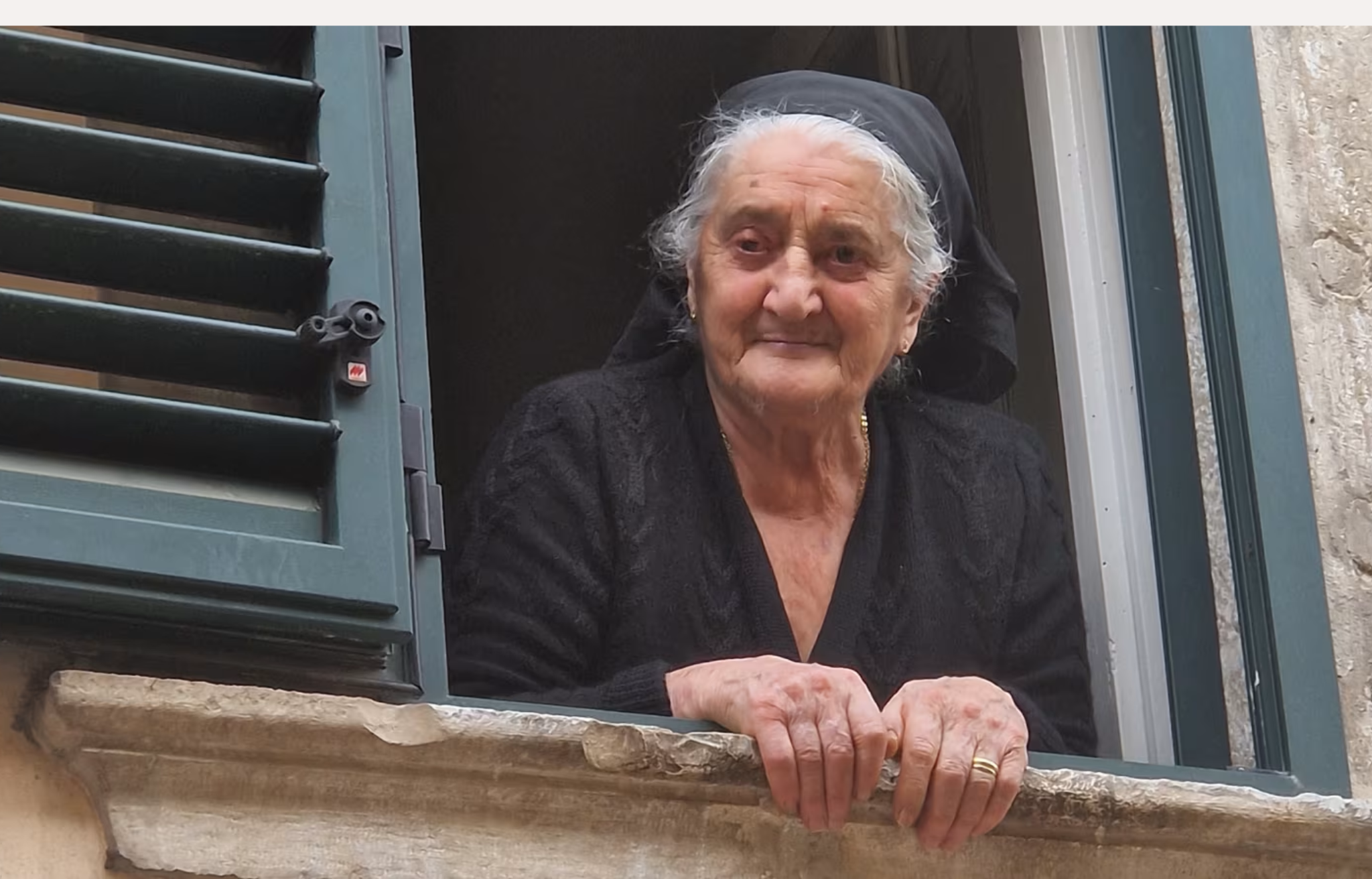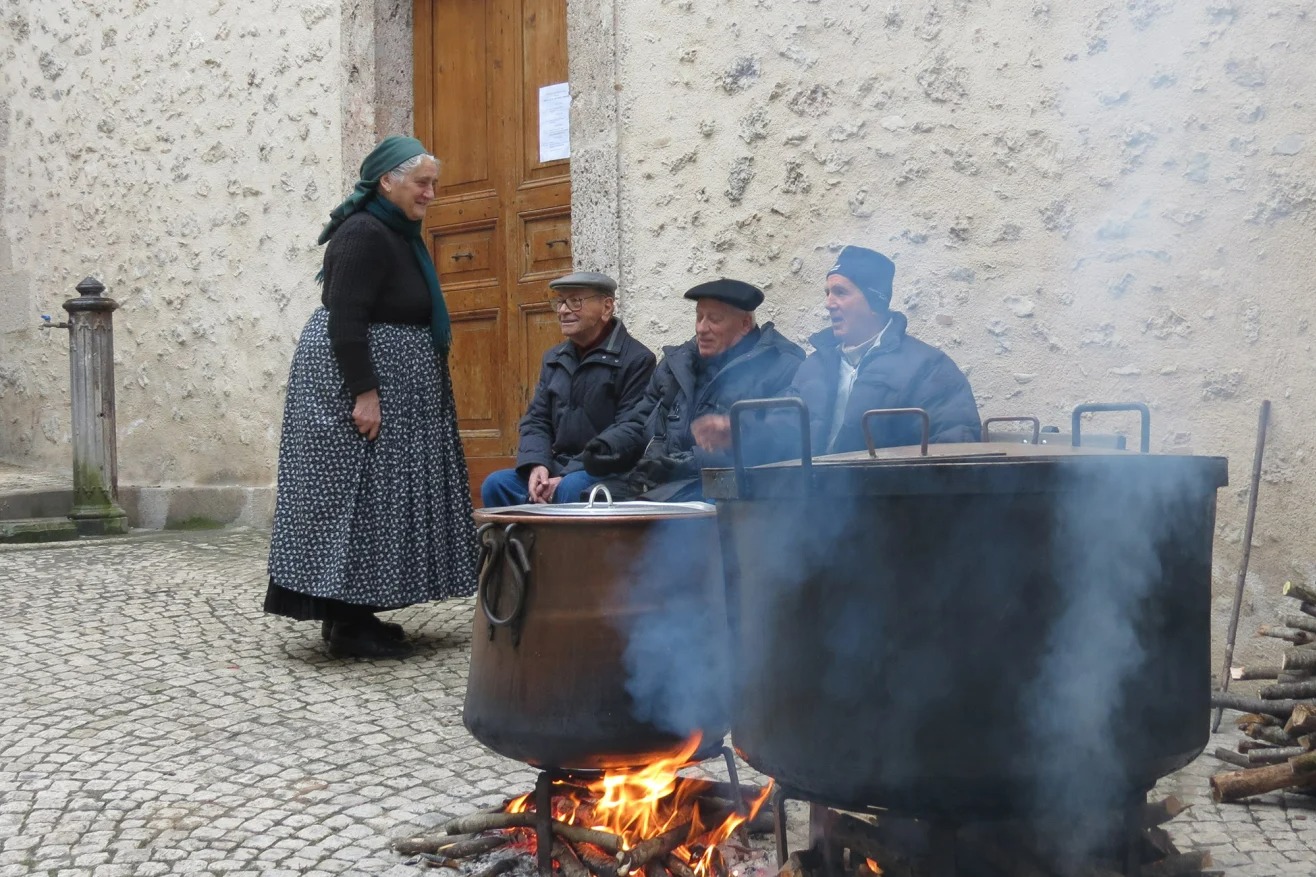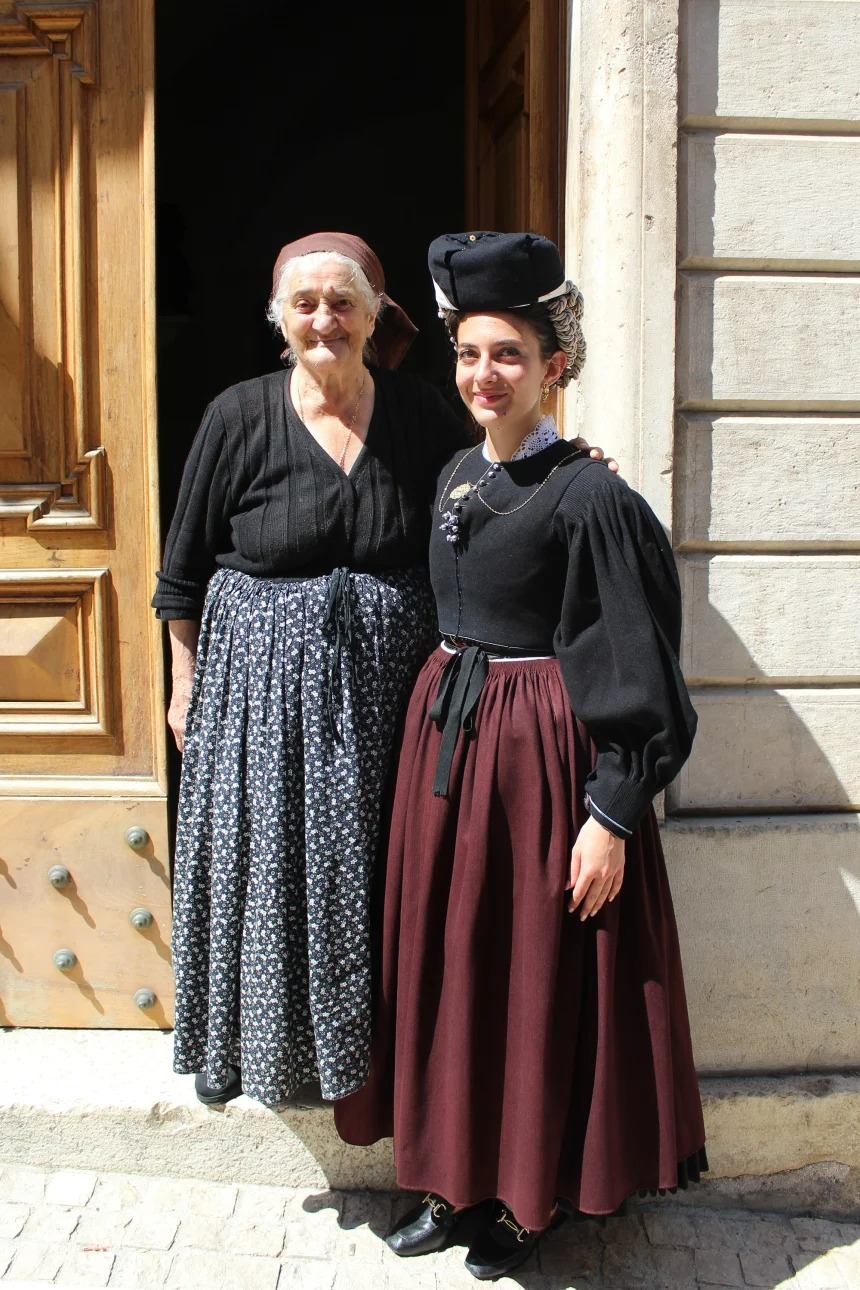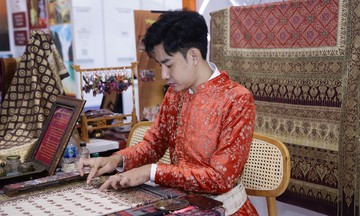Each morning, as the cobbled streets of Scanno, one of Italy's most picturesque villages, awaken, a familiar figure emerges: Margherita Ciarletta. Small in stature, dressed in a dark woolen dress and a pleated headscarf, she walks slowly, carrying with her a fading piece of Abruzzo's history.
She's no royal, but locals and tourists affectionately call her "L'Ultima Regina" - the last queen. She is the only woman in Scanno who still wears the traditional dress every day, a practice she has maintained for 76 years.
"I started wearing it when I was 18. My husband didn't like it much, but that didn't stop me," Ciarletta shares, her voice clear and her gaze sharp.
Her persistence has unintentionally made her a must-see attraction. Tourists from around the world come to Scanno not only to admire the ancient churches or the heart-shaped lake at the foot of the mountain, but also to meet, chat with, and take a photo with the "queen".
They wander through the alleyways, knocking on doors until they find her for a selfie. However, Ciarletta doesn't relish the spotlight. She emphasizes that she's not a star, just an ordinary person proud of her rural roots.
 |
Ciarletta by the window of her stone house, built in 1950. Photo: CNN
 |
Ciarletta chats with a Scanno villager. Photo: CNN
Ciarletta's attire is more than just clothing; it's a cultural legacy, a silent language that speaks of the centuries-old history of Scanno's women. There were two versions of this dress.
The one Ciarletta wears is the everyday version, made of wool and cotton. Its simple, durable design was practical for fieldwork and housework. The other version, worn for festivals, is much more elaborate, with luxurious fabrics, intricate embroidery, and a distinctive headdress. The colors and accessories indicated the wearer's social status and marital status.
With societal progress, modern, practical clothing gradually replaced the traditional dress. Other women stored them away, only wearing them for special festivals. Not Ciarletta. Even after her two sisters, who also wore the dress, passed away, she remained true to her choice.
This steadfastness has taken the "last queen's" story beyond the village. News spread on social media, attracting the attention of media outlets and cultural researchers. Recognizing its unique value, the local government is actively campaigning for UNESCO to recognize the Scanno dress as an Intangible Cultural Heritage of Humanity.
 |
Ciarletta poses for a photo with tourists. Photo: CNN
Born and raised in Scanno, Ciarletta has rarely left. Her life is intertwined with the town's fortunes. She has witnessed Scanno transform from a bustling center with wealthy farming families and a population of over 4,000 in the 1920s to a much quieter place.
For centuries, Scanno thrived with wealthy farming families competing to build lavish residences, churches, and fountains. The village's narrow streets were a maze of baroque, romanesque, and gothic palaces interspersed with modest homes.
Emigration to larger cities and abroad, mainly to the US, in search of better opportunities has reduced the town's population to around 1,600, according to the Italian National Institute of Statistics (Istat). Many old stone houses are abandoned, and the once-bustling streets are now quiet.
Amidst this change, Ciarletta's presence, with her unchanging attire, serves as a link between the past and the present. She still lives in the stone house from 1950. Though elderly, she manages her daily tasks, occasionally using a cane. When her grandchildren visit, she enjoys cooking homemade sfoglia pasta and gnocchi with broccoli rabe, a local Abruzzo specialty, in a region known for its simple cuisine. In return, they help her fend off uninvited tourists.
Being in the spotlight can be bothersome. Ciarletta has declined film crews. While she welcomes most visitors, comfortable with being photographed for Instagram, she has also chased away tourists who wandered into her home.
Hoai Anh (CNN)












